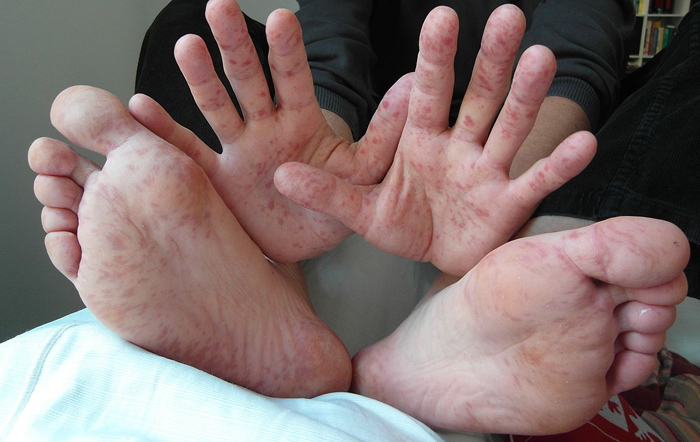
Hand-foot-and-mouth disease (HFMD) is a systemic infection caused by coxsackievirus A16, characterized by ulcerative oral lesions and a vesicular exanthem on the distal extremities in association with mild constitutional symptoms.
Causes of Hand-Foot-and-Mouth Disease
Enteroviral implantation in the GI tract (buccal mucosa and ileum) leads to extension into regional lymph nodes, and 72 h later a viremia occurs with seeding of the oral mucosa and skin of the hands and feet.
Symptoms of Hand-Foot-and-Mouth Disease
Typical symptoms include ulcers in a child’s mouth (especially his tongue, gums, and inside of the cheeks), blisters on his hands and feet (palms and soles) and a low grade fever. Other symptoms can include a rash on the child’s buttocks and mild pain from the mouth ulcers.
Symptoms usually last about 3-6 days.
Diagnosis
Diagnosis is made by most practitioners solely on the basis of the unique appearance of blisters of the mouth, hands, and feet, in a child not appearing very ill.
Treatment
Symptomatic treatment, including topical application of dyclonine HCl solution or lidocaine gel, may reduce oral discomfort.
Prevention
Prevention involves careful attention to hygiene. Thorough, consistent hand-washing practices, and discouraging the sharing of clothes, towels, and stuffed toys are all helpful. Virus continues to be passed in the feces for several weeks after infection, so good hygiene should be practiced long after all signs of infection have passed.
References